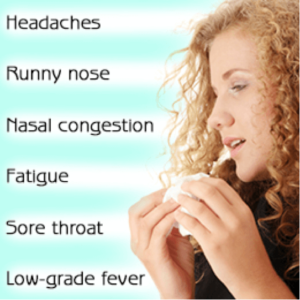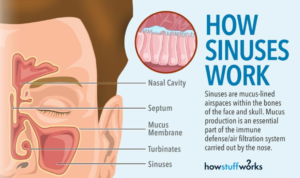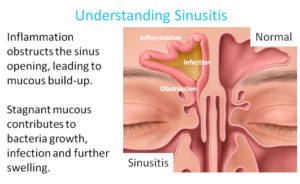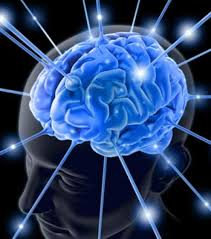Archive | June 2018
QUOTE FOR FRIDAY:
““Thirty years ago this month, President Ronald Reagan issued a presidential proclamation designating the last week of June as “Helen Keller Deaf-Blind Awareness Week.” Every year since, the Helen Keller National Center for Deaf-Blind Youths & Adults (HKNC) commemorates the week with a national advocacy campaign in recognition of the achievements and capabilities of people who are deaf-blind.”
AHC – American Health Council
QUOTE FOR THURSDAY:
“If a child is born totally blind, how will that limitation affect her connection with those around her? The literature estimates that 75%of most people’s learning comes through vision (Smith & Cote, 1982). A deaf infant with normal vision will not have the same trouble developing early bonds with his caregivers as an infant who is blind because, as we have seen,the eyes are a main avenue for these early bonds.”
National Center on Deaf and Blindness (nationaldb.org)
QUOTE FOR TUESDAY:
“Sinusitis usually occurs after a viral upper respiratory infection or cold and includes thick, discolored nasal mucus, decreased sense of smell, and pain in one cheek or upper teeth. Headaches due to sinus disease often last days or longer and migraine headaches most commonly last hours to a day or two. Headaches due to sinus disease often last days or longer and migraine headaches most commonly last hours to a day or two.”
MAYO Clinic
Sinusitis and Headaches in hot weather!
During summer and on those very hot days it is marvellous to go to the beach, relax at the pool side, have a barbeque or even picnic out with friends and family but then you may notice that your nose starts to run, you suddenly develop a headache or you feel stuffy.
Sinuses, which are paired air spaces connected to your nose, is lined with very delicate skin called the mucus membrane. The mucus membrane may then become inflamed by many things like bacteria, colds and flu’s, allergies or even a fungus invasion. We start to feel all those dreadful symptoms when these sinus spaces are blocked, causing mucus build up and pressure.
The most common culprit of summer sinus problems is allergies and hay fever. We don’t hear enough about how pet hair, pollen, dander, dust and dust mites and even milk or how certain food allergies cause sinus problems. But what else about those hot days cause our sinuses to go ballistic?
One often hears about sudden extreme temperature changes causing increased sinus pain and a stuffy or runny nose, but how?
There are millions of tiny hair like structures called cilia that make up the mucus membrane, which lines your nose and sinuses. These cilia work together as a broom, helping to get rid of stagnant mucus that may block the sinuses. Your mucus membranes prefer a moist warm environment as opposed to it being very cold or very hot.
On hot summer days the air is very dry causing the mucus in your nose to become thick and sticky. This makes it difficult for the cilia to move or “sweep” the excess mucus out. This thick mucus then blocks the sinuses. When mucus flow is interrupted or blocked, it often becomes hard in nature and causes pressure and congestion. The pressure and the congestion then cause you to experience pain, stuffiness and headaches.
Know the difference:
Viral sinus infections are the most common type of sinusitis. Viruses that cause the common cold are usually the reason for the sinus infection. The symptoms of a viral sinus infection typically last up to seven to ten days. The first few days your symptoms will worsen and after about the fifth day you may start to see improvement. These types of sinus infections generally go away on their own with rest and vitamin C. The symptoms you may experience while having a viral sinus infection are headaches, congestion, low fever, nasal discharge, and trouble sleeping. If your cold is lingering around and does not runs its course naturally you may actually have a bacterial sinus infection. Learn the signs that indicate your cold may be a bacterial sinus infection. Viral sinus infections do not require antibiotics. When you experience any type of sinus infection it will more than likely be a viral sinus infection.
Bacterial sinus infections are less common than viral sinus infections. It may be difficult to tell the difference between bacterial and viral sinus infections because they share common symptoms.
In some cases a viral sinus infection can develop into a bacterial sinus infections. This occurs when bacteria multiplies in fluid-filled sinus pockets. Bacterial sinus infections may also resolve on their own but may require antibiotics to fight off the bacteria. Signs that your viral sinus infection has increased to a bacterial sinus infection are a noticeable increase in the severity of symptoms or failure to get better after seven to ten days. Some common symptoms of bacterial sinusitis are worsening congestion, more severe facial pain, and thickening or increase of nasal discharge. Bacterial sinus infections can also return shortly after your symptoms have healed, making you think, why do I keep getting sinus infections? If your nasal discharge or mucus is thick, dark, and/or greenish-yellowish, you may have converted to a bacterial sinus infection. Evaluation by your doctor can determine whether or not you have a bacterial or viral sinus infection. If your symptoms show no sign of improvement after ten days it is safe to say you have developed a bacterial sinus infection.
Summer Sinus Health Tips
- Try to Avoid Pollen: Pollen levels are usually highest in the morning so try and stay indoors. Use a HEPA filter, reduce carpeting, and try and vacuum the interior of your home often. Keep your windows closed during especially bad sinus days.
- Make sure you always have a Saline Nasal Spray: One of the most helpful precautions to ward off colds are to keep your nasal passages moist.
- Consider Nasal Irrigation: Cleaning out the nasal passages helps remove bacteria, pollutants and other irritants that can lead to sinus pain and infection. The simplest way is to lean over a sink and use a neti pot to run warm saline into and out of your nasal cavity. You can also use a squeeze bottle which is specifically designed to irrigate the nasal passages.
- Avoid nasal irritants: The membranes that line the nostrils and sinuses are very sensitive and can be damaged from an array of irritants. Two common irritants are tobacco smoke and chlorine. Additional items to avoid are exhaust, mold, and smoke of any kind.
- Be prepared when flying: The dry air and poor interior conditions in an airplane cabin are a perfect area for germs and bacteria to collect. Drinking lots of water and sporadically spraying inside your nose with a saline solution can help fight against these conditions.
QUOTE FOR MONDAY:
“Nasal sinus disease, or sinusitis, affects approximately 33 million people and accounts for more than $5.8 billion in healthcare costs annually, according to a release from Monell. Most of the time, the condition is caused by infection or allergy, which, in turn, causes sinus tissues to swell.”
NBC NEWS
It’s that time of the season again, Sinuses!
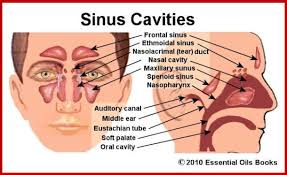
The sinus cavities include:
• The maxillary sinuses (the largest), in the cheekbones.
• The frontal sinuses, in the low-center of the forehead.
• The ethmoid sinuses, between the eyes, at the nasal bridge.
• The sphenoid sinuses, in bones behind the nasal cavity.
The sinuses are lined with soft, pink tissue called mucosa. Normally, the sinuses are empty except for a thin layer of mucus.
The inside of the nose has ridges called turbinates. Normally these structures help humidify and filter air. The nose is divided in the center by a thin wall, called the septum. Most of the sinuses drain into the nose through a small channel or drainage pathway called the middle meatus.
The purpose of the sinuses is unclear. One theory is that sinuses help humidify the air we breathe in; another is that they enhance our voices.
There are millions of bacteria in our noses, and most of the time, they’re harmless. Even when a few creep into the sinuses, they don’t cause trouble, as long as they keep draining into the nose along with mucus. But if sinus drainage is blocked, glands in the sinuses continue to produce mucus, and the resulting pool of backed-up mucus provides what Dr. Metson calls “the perfect culture medium.” The bacteria grow out of control, causing infection, and the immune system kicks off an inflammatory response. The result: swelling, which causes headache and facial pain; mucus buildup, which produces congestion; and an influx of white blood cells to fight the bacteria, which thickens the mucus and may tint it yellow or green. Other symptoms include loss of smell or taste, cough, bad breath, fever, toothache, and fullness in the ears.Sinus blockage can have a variety of environmental, anatomical, and genetic causes, but the main culprit is swelling of the nasal passages produced by the common cold or allergies. More serious sinusitis can result from structural problems, such as a deviated septum (a crook in the partition that separates the right from left nasal cavities) or nasal polyps (small, grapelike growths in the lining of the sinus cavity).
QUOTE FOR THE WEEKEND:
“As a person gets older, changes occur in all parts of the body, including the brain. Certain parts of the brain shrink, especially those important to learning and other complex mental activities.”
NIH National Institute on Aging
How aging affects the human brain and our thinking.
The brain controls many aspects of thinking—remembering, planning and organizing, making decisions, and much more. These cognitive abilities affect how well we do everyday tasks and whether we can live independently.
Some changes in thinking are common as people get older. For example, older adults may have:
- Increased difficulty finding words and recalling names
- More problems with multi-tasking
- Mild decreases in the ability to pay attention
Aging may also bring positive cognitive changes. People often have more knowledge and insight from a lifetime of experiences. Research shows that older adults can still:
- Learn new things
- Create new memories
- Improve vocabulary and language skills
The Older, Healthy Brain
As a person gets older, changes occur in all parts of the body, including the brain.
- Certain parts of the brain shrink, especially those important to learning and other complex mental activities.
- In certain brain regions, communication between neurons (nerve cells) can be reduced.
- Blood flow in the brain may also decrease.
- Inflammation, which occurs when the body responds to an injury or disease, may increase.
These changes in the brain can affect mental function, even in healthy older people. For example, some older adults find that they don’t do as well as younger people on complex memory or learning tests. Given enough time, though, they can do as well. There is growing evidence that the brain remains “plastic”—able to adapt to new challenges and tasks—as people age.
It is not clear why some people think well as they get older while others do not. One possible reason is “cognitive reserve,” the brain’s ability to work well even when some part of it is disrupted. People with more education seem to have more cognitive reserve than others.
Some brain changes, like those associated with Alzheimer’s disease, are NOT a normal part of aging. Talk with your healthcare provider if you are concerned.
Brain Regions
The brain is complex and has many specialized parts. For example, the two halves of the brain, called cerebral hemispheres, are responsible for intelligence.
The cerebral hemispheres have an outer layer called the cerebral cortex. This region, the brain’s “gray matter,” is where the brain processes sensory information, such as what we see and hear. The cerebral cortex also controls movement and regulates functions such as thinking, learning, and remembering.
For more information about parts of the brain, see Know Your Brain from the National Institute of Neurological Disorders and Stroke, part of the National Institutes of Health.
How Brain Cells Work
The healthy human brain contains many different types of cells. Neurons are nerve cells that process and send information throughout the brain, and from the brain to the muscles and organs of the body.
The ability of neurons to function and survive depends on three important processes:
- Communication. When a neuron receives signals from other neurons, it generates an electrical charge. This charge travels to the synapse, a tiny gap where chemicals called neurotransmitters are released and move across to another neuron.
- Metabolism. This process involves all chemical reactions that take place in a cell to support its survival and function. These reactions require oxygen and glucose, which are carried in blood flowing through the brain.
- Repair, remodeling, and regeneration. Neurons live a long time—more than 100 years in humans. As a result, they must constantly maintain and repair themselves. In addition, some brain regions continue to make new neurons.
Other types of brain cells, called glial cells, play critical roles in supporting neurons. In addition, the brain has an enormous network of blood vessels. Although the brain is only 2 percent of the body’s weight, it receives 20 percent of the body’s blood supply.
QUOTE FOR FRIDAY:
“While the heart is one of the first organs to begin development, it takes several weeks before it resembles the four-chambered structure that we all know. When the human heart first begins to form, it looks like a simple tube, much like a fish’s heart. However, rapid growth soon causes the tube to bend and twist backward, beginning the formation of the familiar shape.”
Franklin Institute
